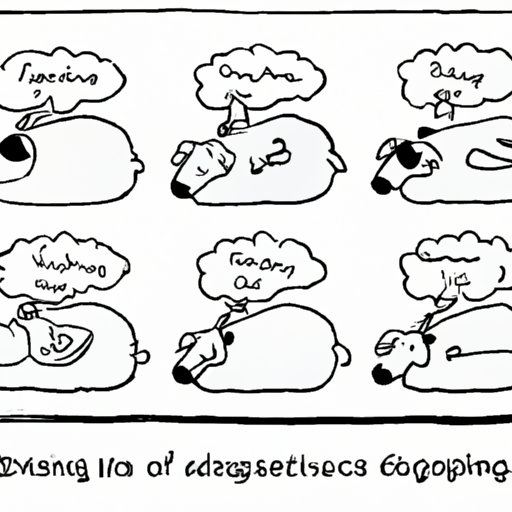If you’re a dog owner, you’ve probably noticed that your furry friend has a favorite way to curl up for a nap. But did you know that your dog’s sleeping position can tell you a lot about their personality, health, and happiness? In this in-depth guide, we’ll explore what different dog sleeping positions mean, and what they can tell you about your pet.
From the popular ‘Donut’ to the ‘Superman’, each sleeping position has its own unique implications about your dog’s current state of mind and health. And understanding these sleep postures could make you a more informed and responsive pet owner, enhancing the bond between you and your four-legged friend.
Table of Contents
Key Takeaways:
- The sleeping position of your dog can reveal insights into their personality and health.
- Changes in sleeping positions can be an indicator of discomfort or health issues.
- Understanding these sleep postures can help you cater to your dog’s needs better.
The Donut
This is when your dog curls up into a tight ball, often with their tail covering their nose. You’ll notice that some dogs prefer this position during colder weather. The Donut conserves body heat and protects the vital organs – a throwback to their wild ancestors. Dogs that sleep in this position are generally a bit more on the nervous side and naturally cautious.
The Side Sleeper
Ever noticed your dog sleeping soundly on their side with their legs sticking out? This is a common position for dogs and is generally associated with them being comfortable and secure in their environment. They’re relaxed, easy-going, and have a strong bond with their owner. It’s a good sign when your dog sleeps in this position in your presence.
The Superman
If your dog sleeps on their stomach with their legs stretched out in front and behind, they’re in the Superman position. This is common in puppies and more energetic dogs. It allows them to jump up and into action quickly. Dogs that sleep in this position are typically adventurous and easily excited.
The Belly Up
This amusing position is when your dog sleeps on their back with their legs in the air. It’s a sign of complete submission and trust, as they expose their belly, which is a vulnerable part of their body. Dogs that sleep in this position are confident and comfortable in their surroundings.
The Burrower
Some dogs prefer to sleep covered by a blanket or under furniture. This is known as burrowing. Dogs that sleep like this might need extra reassurance and safety, as it’s a protective sleep position.
Understanding your dog’s sleeping position is a small but significant part of ensuring their overall well-being. However, sudden changes in your dog’s sleeping habits could be a sign of discomfort or ill health. If you notice such changes, it is a good idea to consult a vet. For further reading on understanding your dog’s behaviors and habits, visit The American Kennel Club.
Frequently Asked Questions
1. Do all dogs have a specific sleeping position?
Yes, most dogs have a preferred sleeping position that they find comfortable. However, they can change their sleeping position based on their mood, health, and environment.
2. Can a change in my dog’s sleeping position indicate a health issue?
Yes, sudden and drastic changes in your dog’s sleeping position can indicate discomfort or a potential health issue. If you notice such changes, it is best to consult with a vet.
3. Why does my dog sleep on its back with its legs in the air?
This is known as the Belly Up position. Dogs sleeping in this position are very comfortable and confident in their surroundings. It’s also a way for them to cool down quickly.
Here are some additional resources on OneTopDog that you might find helpful:
- Understanding Your Dog’s Body Language
- How to Choose the Right Bed for Your Dog
- Common Dog Health Problems and Solutions
As a dedicated pet owner, understanding your dog’s sleeping position can provide valuable insights into their overall well-being. Remember, open communication and understanding are instrumental in building a strong and healthy relationship with your pet.



